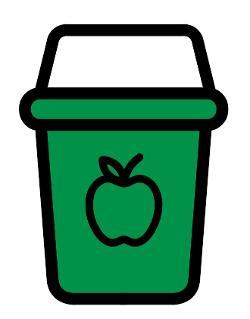Food waste recycling

Make sure your food waste bag is placed in your green caddy with the lid closed, before putting your caddy out for kerbside collection by 7.30am on your collection day.
Food waste is collected weekly.
What goes in the food waste caddy?
| Plate scrapings - all uneaten food and plate scrapings | Any food packaging waste including plastic, cardboard or cans |
| Dairy products - cheese, eggs, yoghurt | Liquids / Oils / Fats |
| Bread and pastries - bread, cake, pastries | Pet Waste |
| Meat and bones - raw meat, cooked meat, bones | |
| Tea bags and coffee grounds | |
| Fruit and vegetables - raw vegetables, cooked vegetables, whole fruit, peelings | |
| Fish - raw fish, cooked fish, bones | |
Rice, pasta and beans | |
| Newspaper (only when used as liner) |


